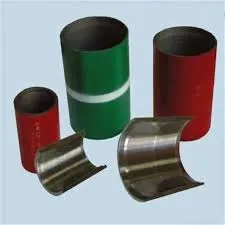- Afrikaans
- Albanian
- Amharic
- Arabic
- Armenian
- Azerbaijani
- Basque
- Belarusian
- Bengali
- Bosnian
- Bulgarian
- Catalan
- Cebuano
- Corsican
- Croatian
- Czech
- Danish
- Dutch
- English
- Esperanto
- Estonian
- Finnish
- French
- Frisian
- Galician
- Georgian
- German
- Greek
- Gujarati
- Haitian Creole
- hausa
- hawaiian
- Hebrew
- Hindi
- Miao
- Hungarian
- Icelandic
- igbo
- Indonesian
- irish
- Italian
- Japanese
- Javanese
- Kannada
- kazakh
- Khmer
- Rwandese
- Korean
- Kurdish
- Kyrgyz
- Lao
- Latin
- Latvian
- Lithuanian
- Luxembourgish
- Macedonian
- Malgashi
- Malay
- Malayalam
- Maltese
- Maori
- Marathi
- Mongolian
- Myanmar
- Nepali
- Norwegian
- Norwegian
- Occitan
- Pashto
- Persian
- Polish
- Portuguese
- Punjabi
- Romanian
- Russian
- Samoan
- Scottish Gaelic
- Serbian
- Sesotho
- Shona
- Sindhi
- Sinhala
- Slovak
- Slovenian
- Somali
- Spanish
- Sundanese
- Swahili
- Swedish
- Tagalog
- Tajik
- Tamil
- Tatar
- Telugu
- Thai
- Turkish
- Turkmen
- Ukrainian
- Urdu
- Uighur
- Uzbek
- Vietnamese
- Welsh
- Bantu
- Yiddish
- Yoruba
- Zulu
well casing coupling
Understanding Well Casing Coupling in Oil and Gas Industry
In the oil and gas industry, the integrity of well construction is paramount to successful drilling and production operations. One critical component in this process is the well casing coupling. This specialized connector plays a vital role in ensuring the structural integrity and operational efficiency of wells, particularly in the context of high-pressure and high-temperature environments.
What is Well Casing and Coupling?
Well casing refers to the pipe that is installed in the drilled well to provide stability and protection to the wellbore. It serves several purposes, including preventing the collapse of the well walls, protecting groundwater sources, and isolating different layers of rock and fluid within the earth. Casing is typically made from steel, given its strength and durability to withstand harsh conditions encountered during drilling and production processes.
Casing couplings, on the other hand, are the threaded connectors that join sections of casing together. These couplings ensure a tight fit, allowing the casing to be extended to the desired depth while maintaining the integrity of the well. Couplings must be robust enough to handle the mechanical stresses associated with drilling and production.
Types of Well Casing Couplings
There are several types of casing couplings used in the industry, which can be broadly categorized based on their design and application. The most common types include
1. Plain Couplings These are the simplest form of couplings that provide a straightforward method to connect casing sections. Plain couplings have standard external and internal threads that facilitate the connection of two casing pipes.
well casing coupling

2. Threaded Couplings Threaded couplings feature specially designed threads that enhance the strength of the connection. They are usually used in high-pressure environments where leakage prevention is critical.
3. Welded Couplings In some applications, welded couplings are utilized, where the ends of the casing sections are welded together. This method offers a permanent connection that is resistant to pressure changes.
4. Specialty Couplings These couplings may incorporate various designs for specific applications, such as anti-rotation features or those designed to handle extreme temperatures and corrosive environments.
Importance of Proper Coupling Design
The design and selection of couplings significantly impact the overall performance of the well. A well-designed coupling can withstand harsh environmental factors, including temperature fluctuations, pressure changes, and chemical corrosion. Failure at the coupling point can lead to catastrophic consequences, including well blowouts, leakage of hydrocarbons, and environmental contamination.
Moreover, the appropriate selection of coupling material is critical. Steel is commonly used; however, alloying elements can be added to enhance corrosion resistance, especially in sour gas environments where hydrogen sulfide may be present.
Conclusion
In summary, well casing couplings serve as essential components in the construction and operation of oil and gas wells. Their role in connecting casing sections cannot be understated, as they ensure the structural integrity necessary for safe drilling and production. As the industry progresses towards challenging environments and deeper drilling, the importance of advancements in coupling technology becomes ever more significant. By investing in quality materials and innovative designs, the oil and gas sector can continue to minimize risks and enhance the efficiency of its operations. Understanding the intricacies of well casing couplings is crucial for engineers and drilling personnel aiming to maintain the safety and reliability of drilling projects.
-
Well Casing Extension Couplings – Applications and InstallationNewsJun.06,2025
-
Types of Crossover Subs in Drilling & CompletionNewsJun.06,2025
-
Key Features of High-Quality Tubing Pup JointsNewsJun.06,2025
-
Installation and Maintenance Tips for Steel Couplings for PipeNewsJun.06,2025
-
How to Select the Right Pup Joint for Oil & Gas OperationsNewsJun.06,2025
-
Applications of Stainless Steel Pipe CouplingsNewsJun.06,2025







